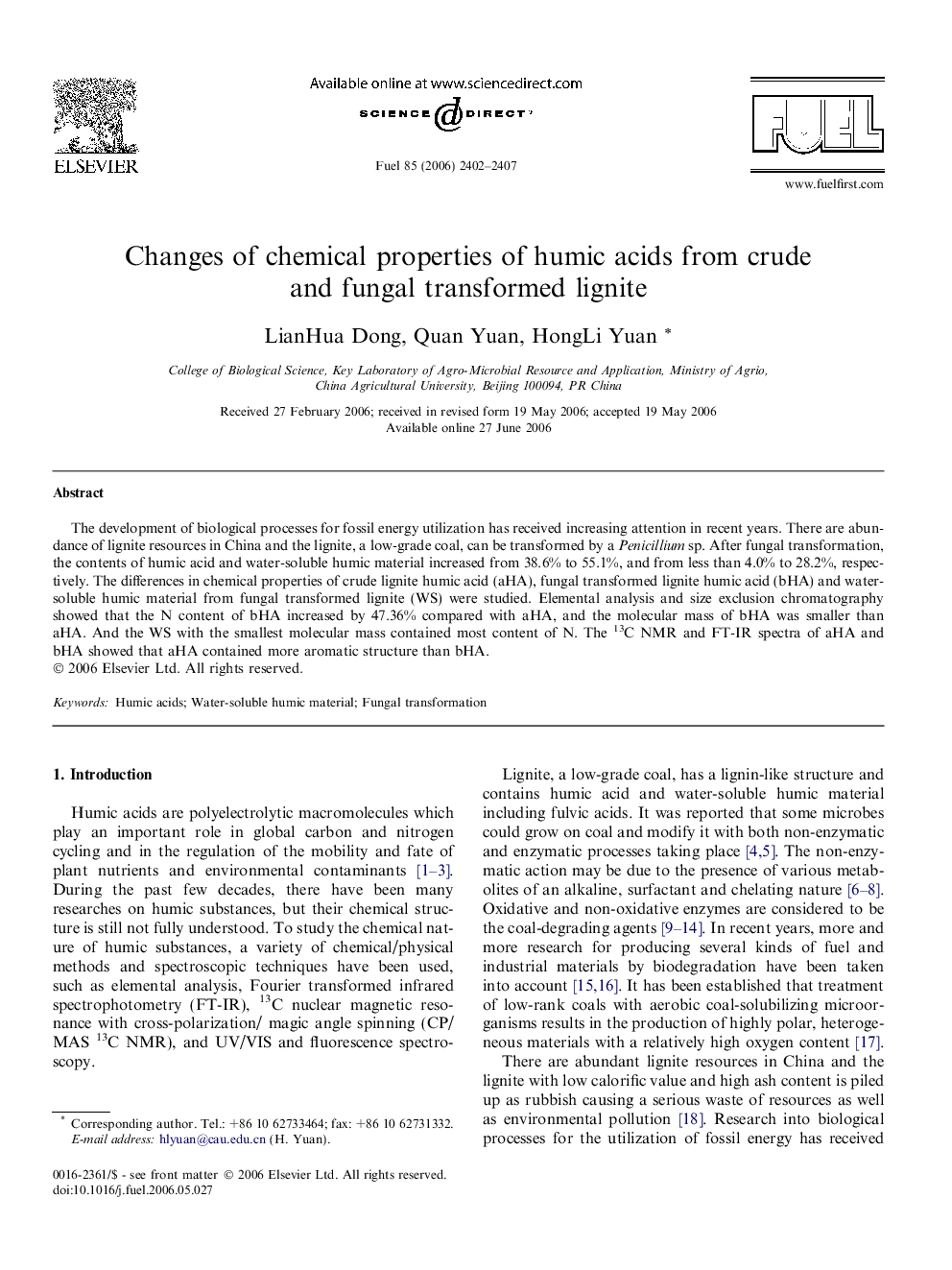| Article ID | Journal | Published Year | Pages | File Type |
|---|---|---|---|---|
| 208588 | Fuel | 2006 | 6 Pages |
The development of biological processes for fossil energy utilization has received increasing attention in recent years. There are abundance of lignite resources in China and the lignite, a low-grade coal, can be transformed by a Penicillium sp. After fungal transformation, the contents of humic acid and water-soluble humic material increased from 38.6% to 55.1%, and from less than 4.0% to 28.2%, respectively. The differences in chemical properties of crude lignite humic acid (aHA), fungal transformed lignite humic acid (bHA) and water-soluble humic material from fungal transformed lignite (WS) were studied. Elemental analysis and size exclusion chromatography showed that the N content of bHA increased by 47.36% compared with aHA, and the molecular mass of bHA was smaller than aHA. And the WS with the smallest molecular mass contained most content of N. The 13C NMR and FT-IR spectra of aHA and bHA showed that aHA contained more aromatic structure than bHA.
